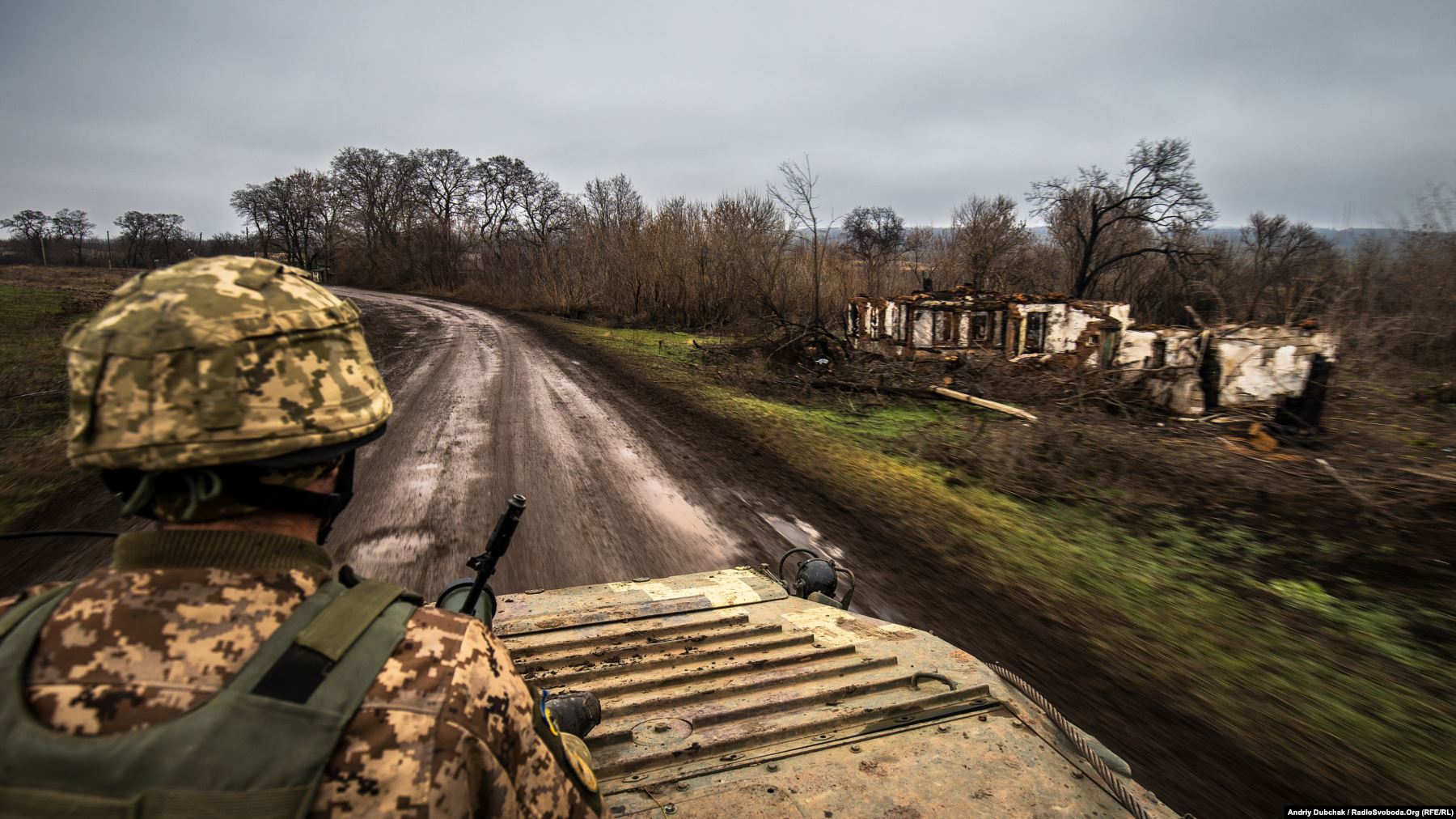Andriy Dubchak, one of the only photojournalists to have covered the conflict in eastern Ukraine from its beginning, shares deeply personal memories from the front lines.
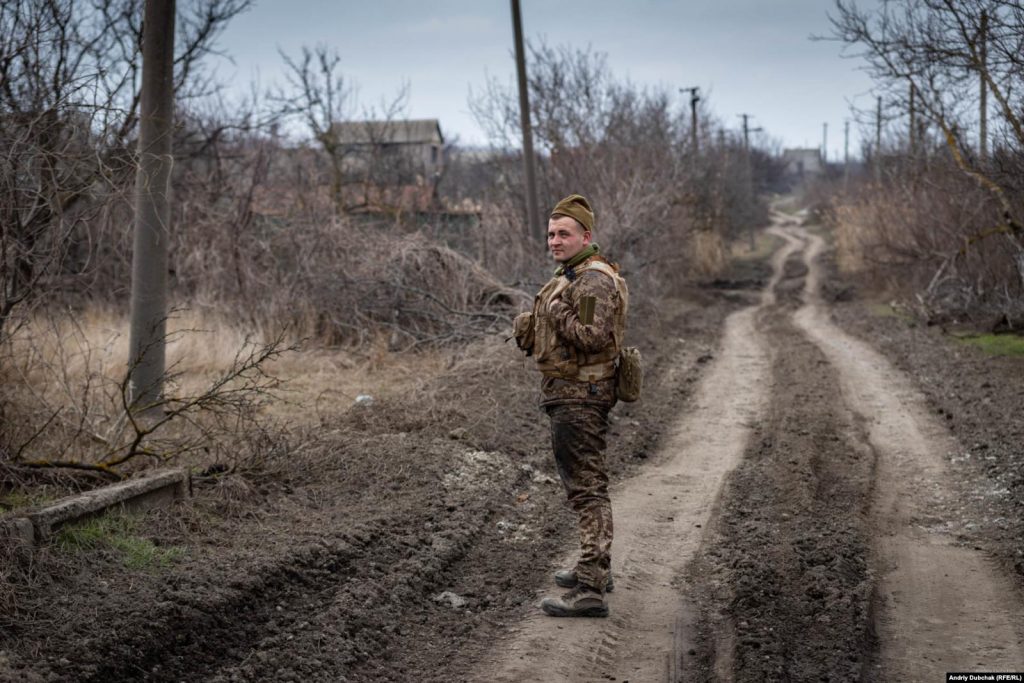
“His name was Eduard Yuriyevich Fedorov, a Ukrainian marine. I took this photo in March 2018 as he escorted me from a frontline position near Mariupol. He said, ‘Give me a couple of photos, as mementos.’ On June 27 he was hit by an enemy bullet. For five days, doctors fought to save his life, but…failed. His heart stopped.
He left behind a pregnant wife he’d just married. On September 17, a daughter was born who will know her father only from photos. I knew him a couple of hours. I will remember him my whole life.”
These are the words of Ukrainian Andriy Dubchak, a 42-year-old photographer who has covered the conflict in his homeland from 2013 — when protests first broke out near his office on Kyiv’s Maidan Square — through its escalation into a war between Russia-backed separatists and the Ukraine military. To date, the conflict has claimed the lives of more than 13,000 people.

As the fighting has dragged on and foreign correspondents drifted to other stories in other places, Dubchak, a longtime employee of RFE/RL’s Ukrainian Service, has regularly headed for the fighting lines in eastern Ukraine. The following 14 pictures and observations are a result of those trips.
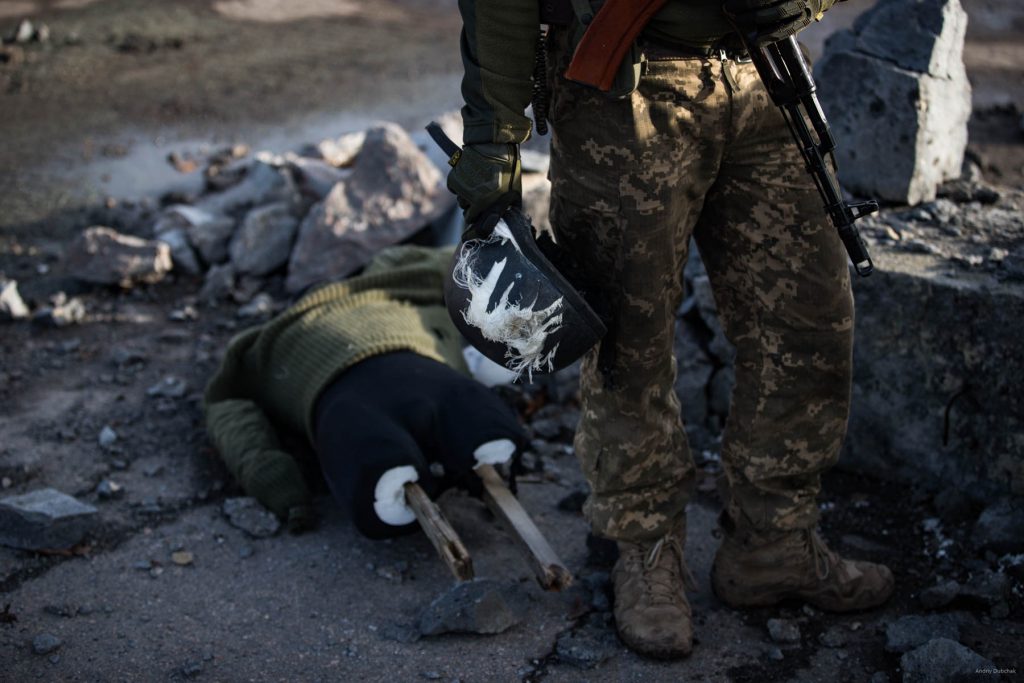
A shredded “Kevlar” helmet after a scarecrow designed to draw fire took a headshot from a sniper’s bullet. Dubchak says, “Most likely, the enemy sniper knew it was a dummy but shot anyway, as if to say, ‘I see everything.’”
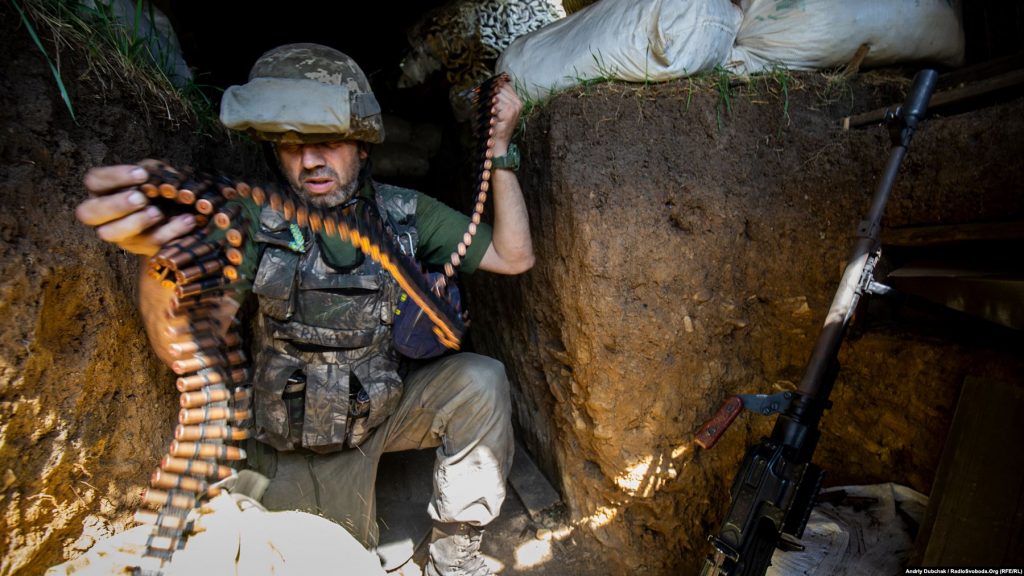
During a firefight near Horlivka in June 2018, as bullets “buzz and squeal” overhead, a soldier races to replace a belt of machine-gun bullets.
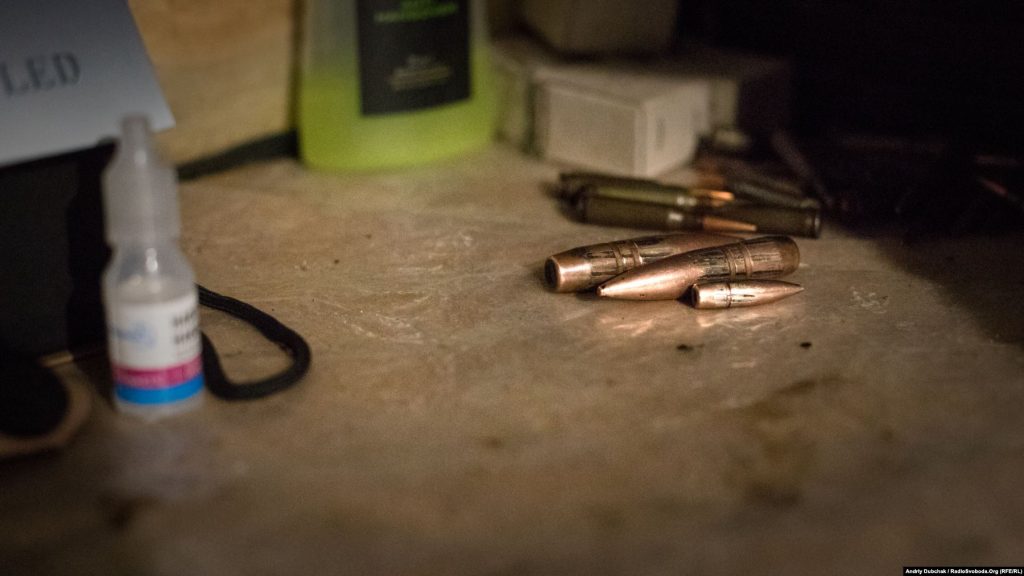
A collection of inbound bullets picked up from a Ukrainian position near Popasna in December 2017. Around the dugout where Dubchak took this photo, militants regularly fired at surrounding trees with what the soldiers described as explosive bullets. The shots were loosely aimed, and Dubchak says they were “just made to keep psychological pressure on the fighters.”
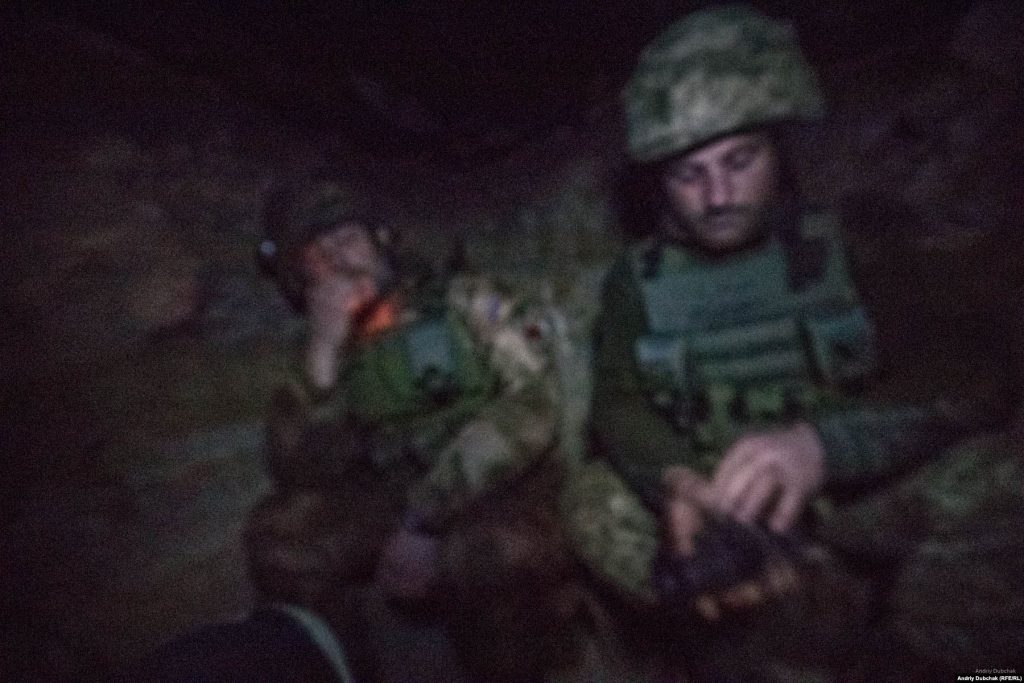
In the darkness of a dugout near Bakhmut in December 2017, senior fighter “Didick” (right) shared with Dubchak the harrowing aftermath of losing one of his young soldiers. “When that mobile phone rings and you have to answer, and you can hear a female voice saying, ‘Hello! Hello! Sashku, Sashku, how are you? Hello! Why are you quiet?’ You stand there holding the dead soldier’s phone, not knowing how to begin. In those moments your voice shakes, your hands and feet tremble. You talk some nonsense, trying to express your apologies and sympathies. There would be silence on the other end. Then you would hear weeping and hysterics. That was the hardest thing,’” said Didick.
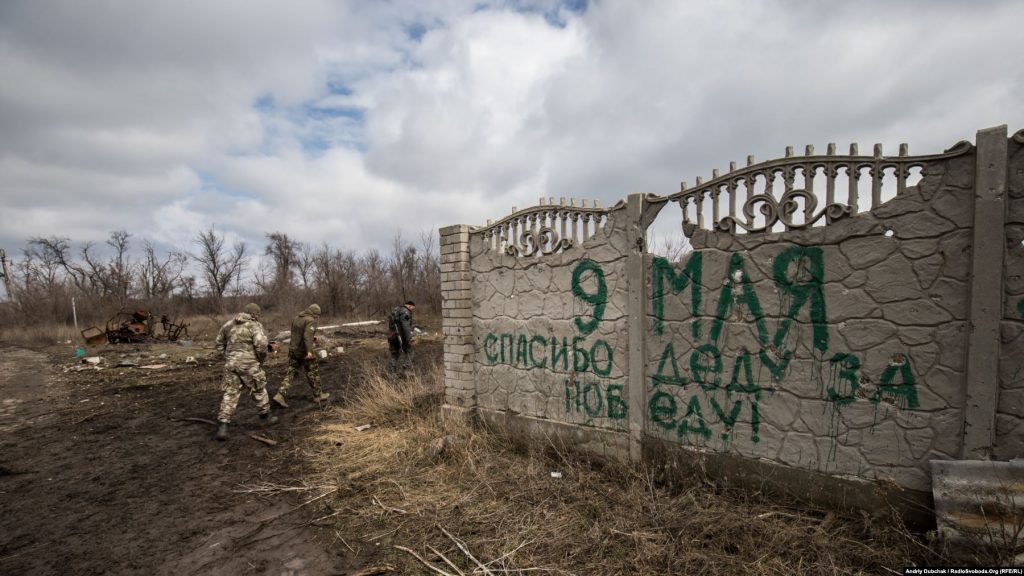
Ukrainian soldiers walk past a fence in Shyrokyne with a message written by Russia-backed separatists: “May 9, Thank your grandfather for the victory!” in reference to the 1945 Soviet victory over Nazi Germany.
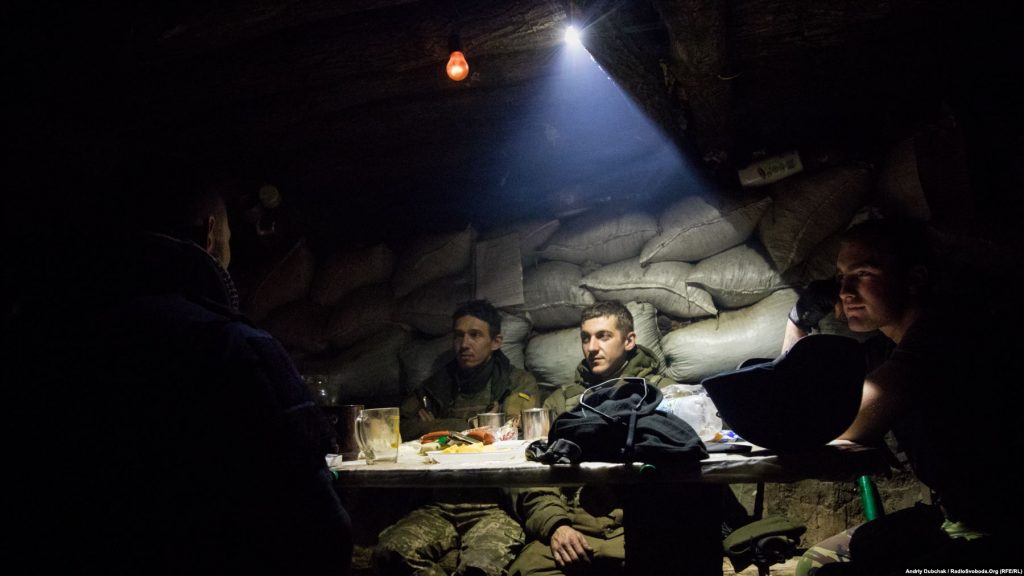
At a position near Bakhmut, Ukrainian soldiers eat dinner as their comrades-in-arms trade bursts of fire with Russia-backed separatists. Dubchak says his arrival at the outpost was discovered by the militants through radio chatter. That night, he and fellow RFE/RL photographer Maryan Kushnir lay pinned to the frozen soil outside as a series of tracer bullets blazed past within inches of the pair. In the darkness, Dubchak’s microphone recorded the near deadly incident.
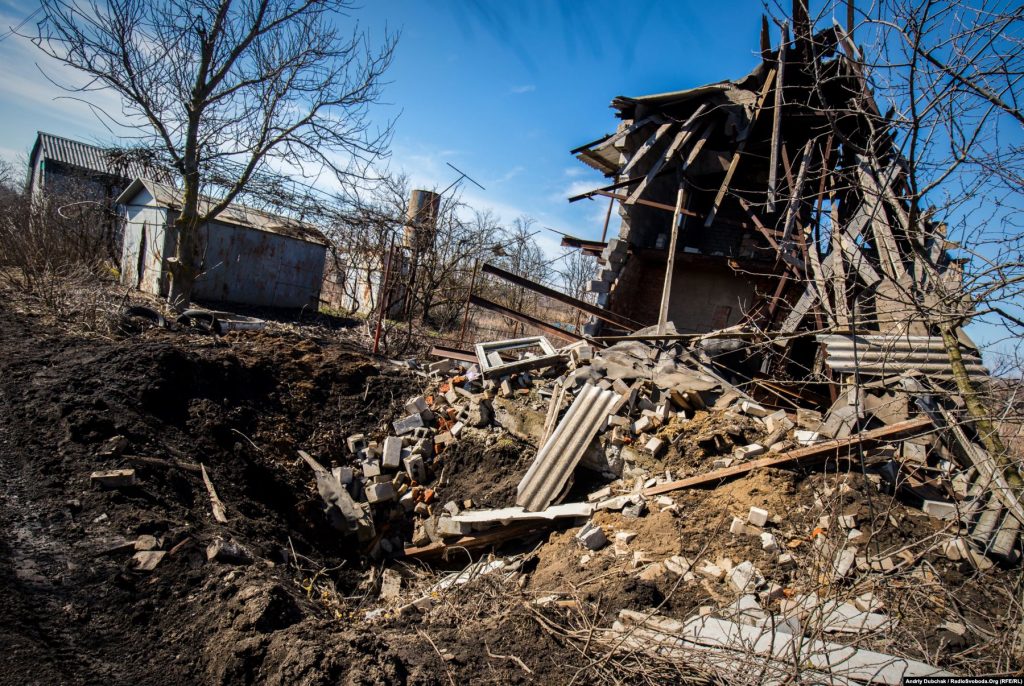
The wreckage of a house in the village of Vodyane, wiped out by separatists probably firing a 152mm howitzer in March 2018. Dubchak says in places like this, when he could hear the shells from heavy artillery screaming overhead, “You can feel death is close. If you’re honest with yourself you know you can die, but at the same time there’s a little hopeful voice telling you not to believe it. It’s like a fight going on inside your mind — hope and reality wrestling with each other.”
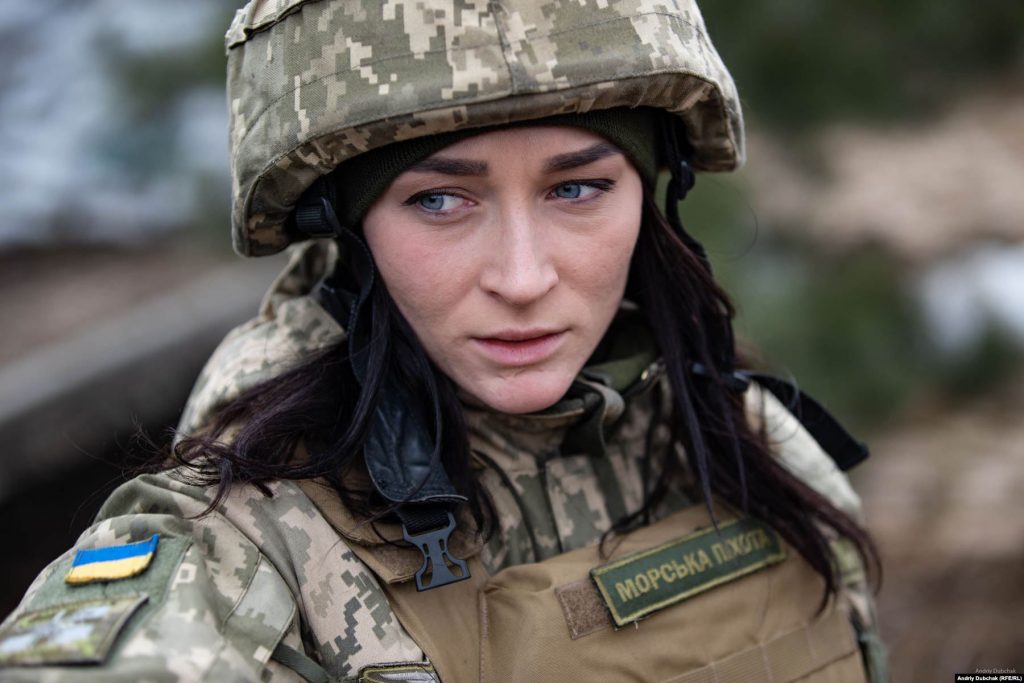
Oleksandra Bessmertnaya, a press officer for Ukraine’s Marine Corps in Shyrokyne, March 2018
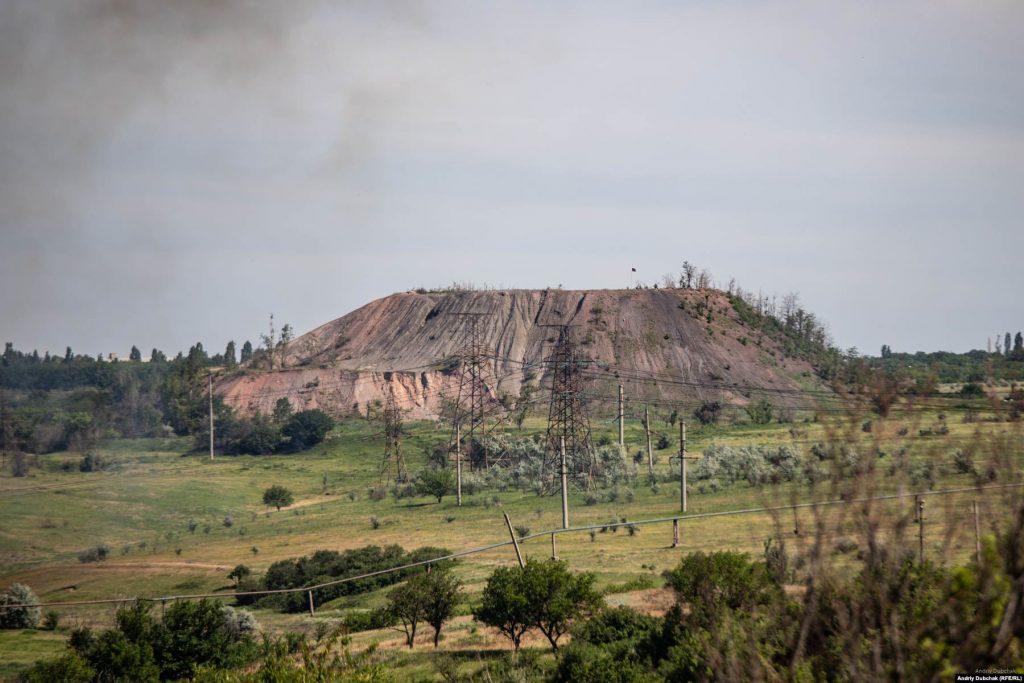
The smoke from burning houses drifts above a mine’s slag heap. On the summit, the flag of the Russia-backed separatists can be seen, where gun placements hold a commanding view of the battleground.
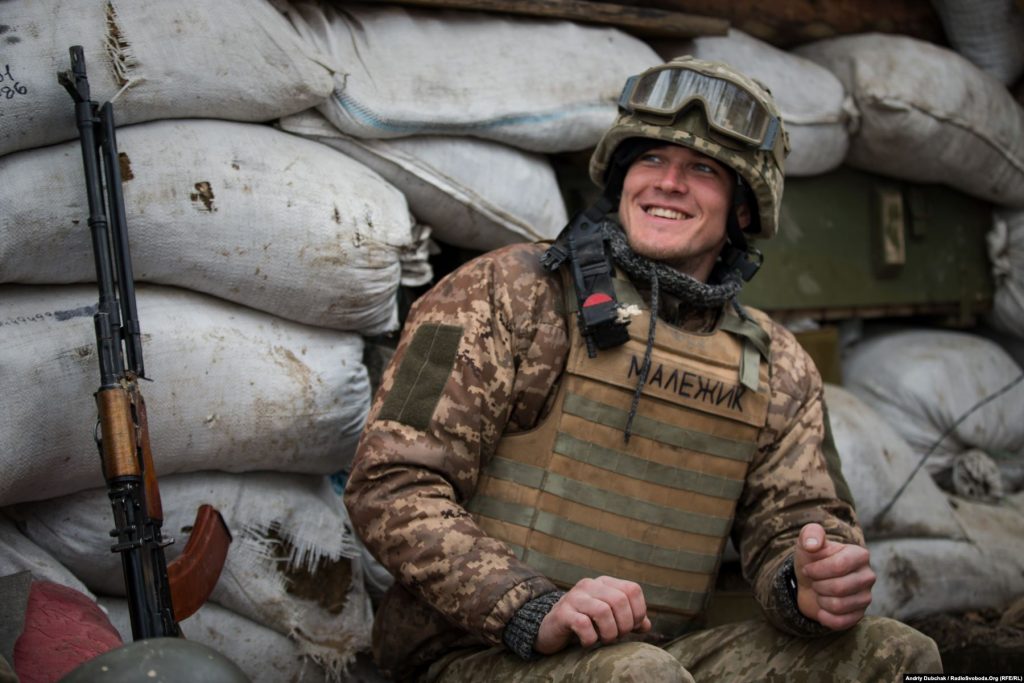
A Ukrainian Marine nicknamed “Malezhik” in a fortified position just 200 meters from enemy lines. A few months after this picture was taken, the young fighter was wounded by fragments from an exploding grenade. After recuperating in a military hospital, he is now back on the fighting front.
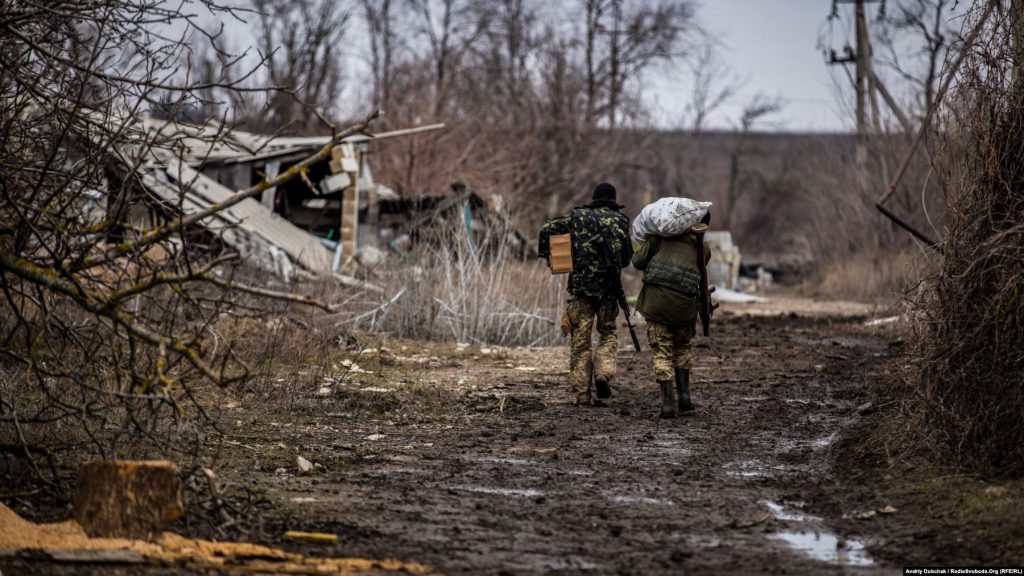
Ukrainian marines carry potatoes and other food toward a frontline position. After his extensive experience covering the conflict, Dubchak says: “War is not only shooting and explosions, it’s also cabbage, beets, and condensed milk, a filthy uniform and socks, dreams of a bath. It’s cucumbers, meat, batteries, 1.5 liters of water a day, timber, shovels, digging trenches and digging again, around-the-clock digging. War is a constant manhandling of some thing to some place. It’s soaked boots, amplifiers for WiFi, bread, fuel, and a missing spanner. War is an overdue parcel at the post office, and a pot too small to feed everyone borscht. It’s firewood, then more firewood, and again firewood. Trench warfare is at least 90 percent logistics.”
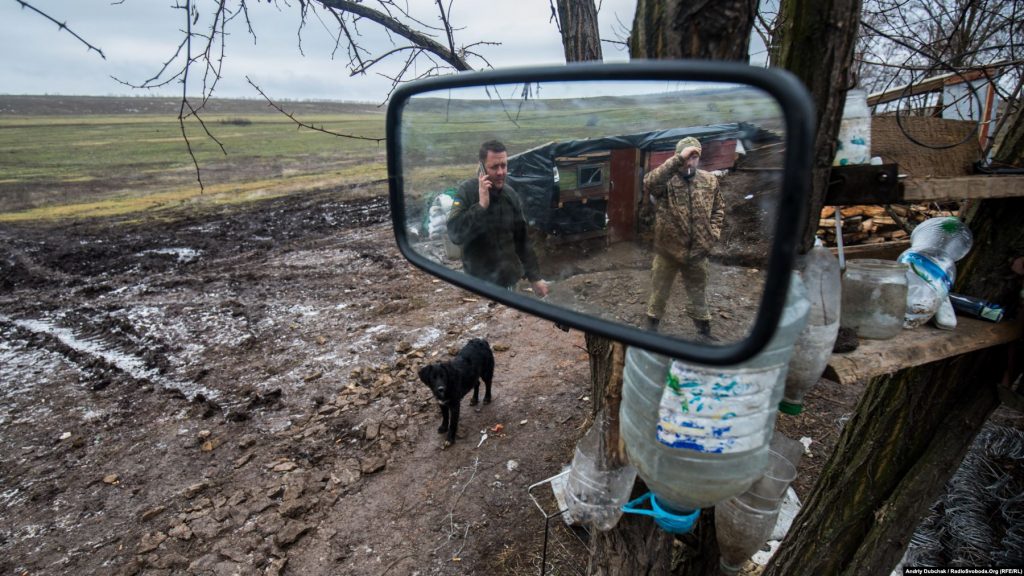
A puppy at a position near Popasna in December 2017. Dubchak says each military post along the engagement line has either cats or dogs — but rarely both together. The dogs serve as ever-watchful guards and popular mascots, while the cats keep rodents out of the camps.
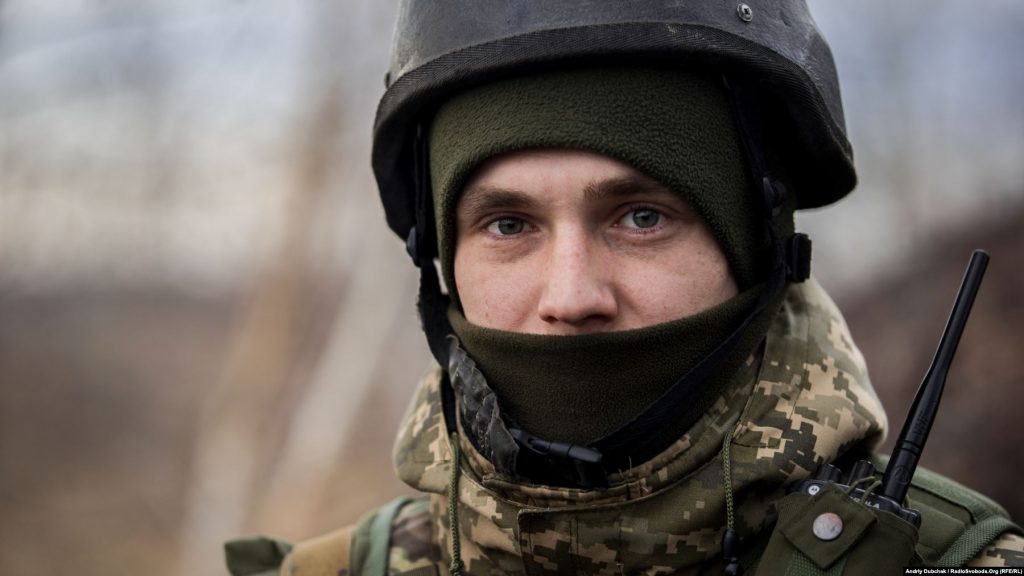
A soldier named Oleksandr at an outpost near the town of Zolotyy, in Ukraine’s Luhansk region. Moments after this picture was taken, as the 28-year old soldier laughed in conversation, Dubchak’s video capturedthe thwack of a sniper’s bullet impacting nearby. Then, a few days after Dubchak and fellow photographer Maryan Kushnir had returned to Kyiv, Oleksandr was struck in the head by another sniper’s bullet. The brain-damaged soldier is undergoing a lengthy rehabilitation in western Ukraine. Dubchak, who has since spoken to Oleksandr by phone, says his voice slowed to a drawl after the shooting but the soldier’s condition has been improving steadily. Oleksandr recently visited Western Europe after a crowdfunding campaign raised money for a holiday for the wounded young veteran.

A Ukrainian sniper in June 2018 after his position near Horlivka was discovered and enemy bullets started to kick up the dirt nearby. Dubchak says he is often afraid during such reporting trips, but a colleague who once fought in the Ukrainian military and now works as a driver with RFE/RL gave him advice that has helped him to function at the front line. “Once I was panicking a little before we headed for a dangerous position. Our driver told me, ‘Don’t be afraid. Your fate is already written in the sky. You either die or you don’t. Now just relax and let’s go.’”
——————
Text by Amos Chapple
Quotes were edited for length and clarity.
Published at www.rferl.org and petapixel.com
